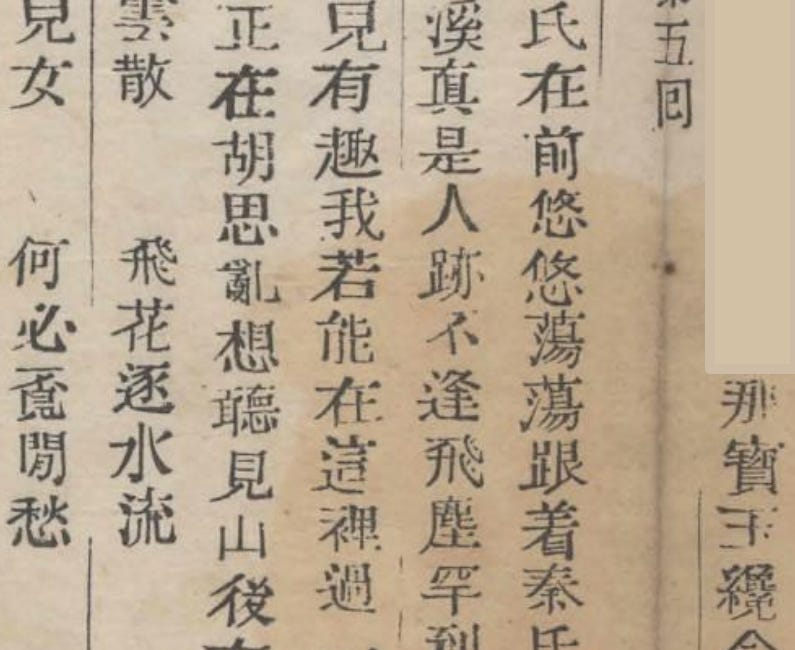The Color Red
Over the past few passages, we’ve seen the color red quite a few times:
上了正房臺階,小丫頭打起猩紅氈簾
As they went up the steps to the main apartment, a young maid lifted up the dark red felt curtain.
又見三兩個婦人都捧著大紅油漆盒,進這邊來等候
She then saw two or three more women come over to her side to wait, each holding a large red box.
只見門外銅鉤上懸著大紅灑花軟簾,南窗下是炕,炕上大紅條氈
She saw a soft floral red curtain hanging from a brass hook outside the door. There was a couch covered with a large red felt rug under the window to the south.
And that’s only a small sampling of what is to come.
Now, there are other ways to translate these colors. 猩紅 might be better rendered as “scarlet,” for example, and the 大紅 we’ve seen a few times so far might better be translated as “scarlet.”
But it’s red, no matter how you look at it, and I think repeating the word “red” gives a better feeling of the repetition of the character 紅 in these passages.
My understanding is that the color red was traditionally an auspicious color in Chinese culture. You see it in festivals, and it stands out prominently in Chinese weddings and during the Chinese New Year.
It was also apparently fairly expensive to decorate one’s house with the color red in old days. The constant references to scarlet this and vermillion that is likely an indication of how fabulously wealthy the Jia family was.
And then, of course, there’s the color red in the title of the book itself: Dream of the Red Chamber, or 紅樓夢. The word 紅樓 actually refers to a young woman’s bedroom, and is literally used this way in chapter 5, when Jia Baoyu has his prophetic dream in Qing Keqin’s bedroom:
And, in that sense, the lucky color red is actually a symbol of the eventual tragedy to come. You can think of the constant repetition of the color red in these scenes as something ironic, almost like the good fortune the Jia family now enjoys is doomed to fail before they know it.



